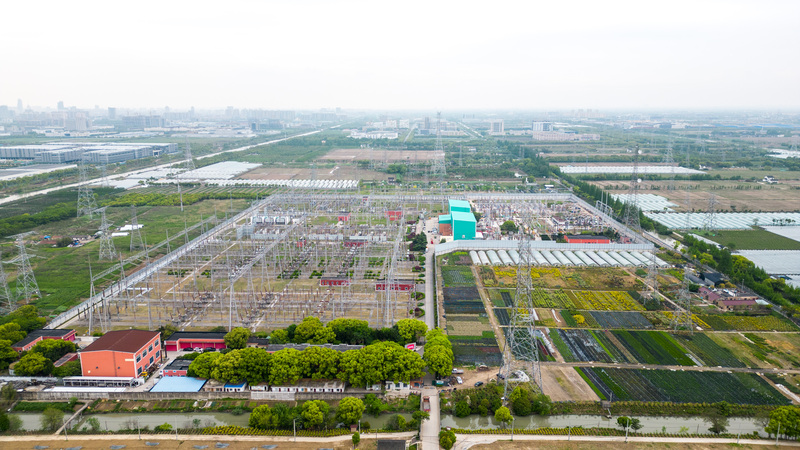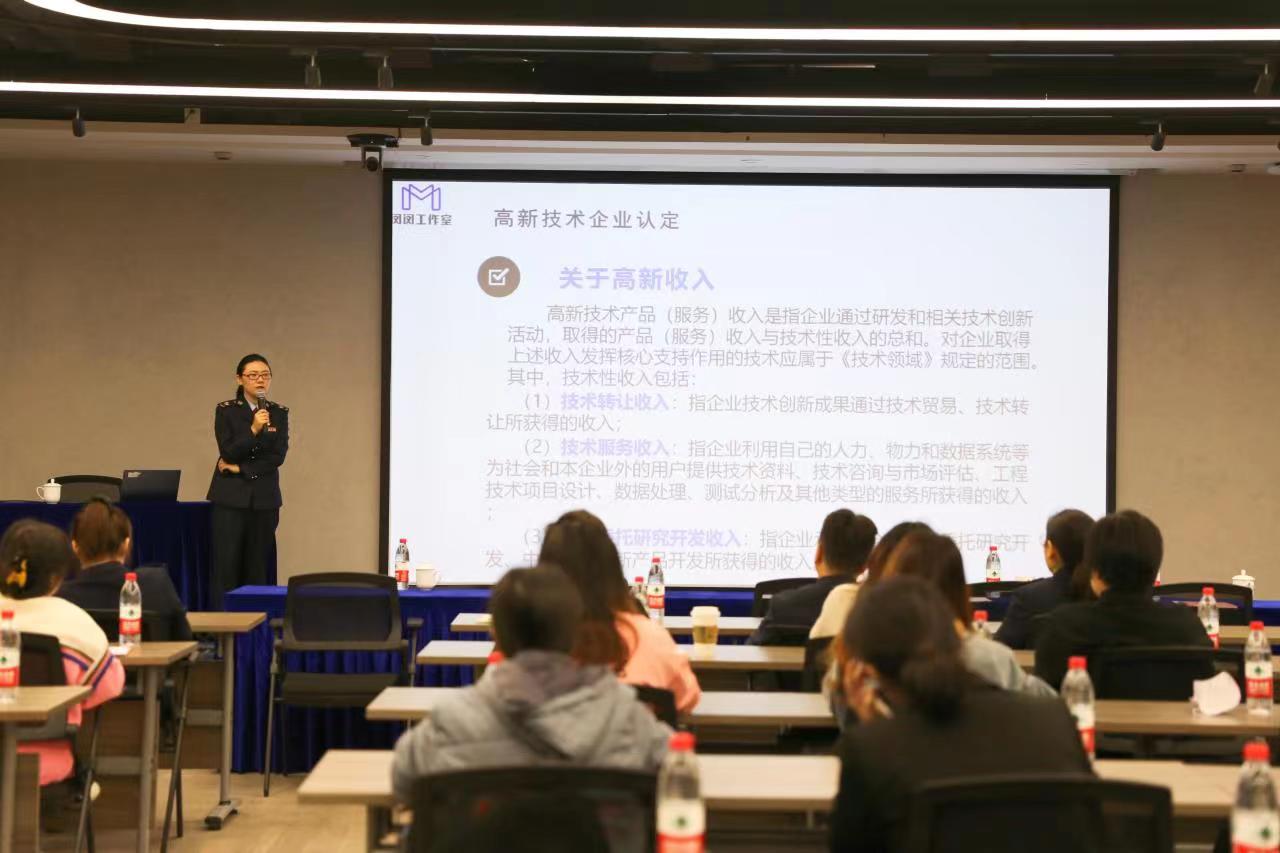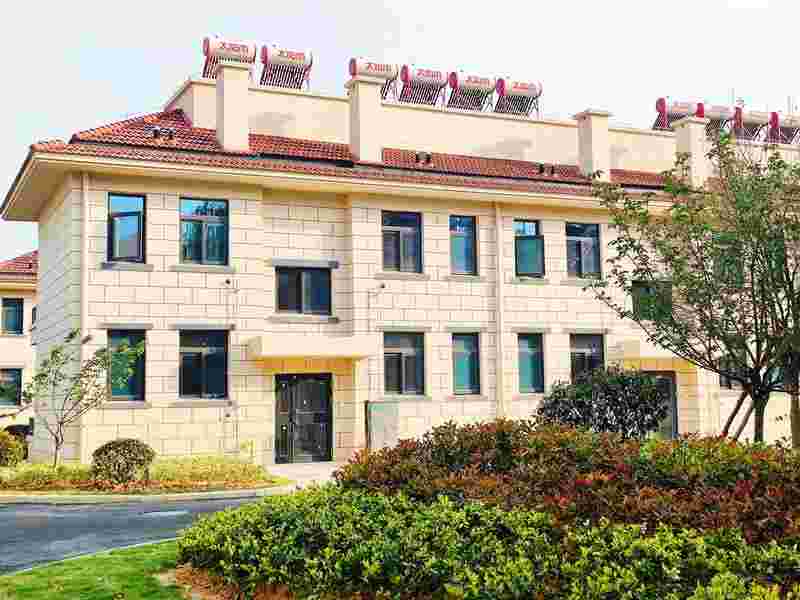What has Shanghai done? High-quality development research | Stimulating new productivity from 0 to 100
In 2023, in the "Global Innovation Index 2023" released by the World Intellectual Property Organization, the Shanghai-Suzhou cluster ranked fifth in the world.
At the same time, last year, the scale of Shanghai's three leading industries of integrated circuits, biomedicine, and artificial intelligence reached 1.6 trillion yuan. The added value of strategic emerging industries increased by 6.9% year-on-year, accounting for 24.8% of Shanghai's GDP. On average, new technology companies were added every day. 370, and the number of high-tech enterprises exceeded 24,000 during the validity period.
The construction of Shanghai International Science and Technology Innovation Center has achieved new results. Behind this is from the source of innovation to entrepreneurial enterprises to industrial ecology. Shanghai is improving the entire chain of science and technology from 0 to 100.
If the starting point of new productivity is technological innovation, then where is the source of technological innovation? Nobel Prize statistics provide the answer.
"Since its establishment in 1900, 95% of the Nobel Prizes in Physics have been awarded to the most fundamental scientific issues or fundamental development laws, as well as experimental methods of related research," said Zhang Jie, academician of the Chinese Academy of Sciences and director of the Lee Tsung-Dao Institute. Said, "It can be seen from this that fundamental scientific issues are actually the root of human innovation."
With this original intention, the Tsung-Dao Lee Institute was established at Shanghai Jiao Tong University in 2016. During the first five-year construction period, three major research directions were formed: astronomy and astrophysics, particle and nuclear physics, and condensed matter physics. Research team in research direction. Early last year, Zhang Jie led the team to complete the preparation of the "2035 Development Plan of the Lee Tsung-Dao Institute", which clarified that the Lee Institute will focus on the fundamental scientific issue of "the origin and evolution of matter under extreme cosmic conditions." Zhang Jie said: "If this question is answered, we may have new insights into the composition and evolution of the entire universe."
"Tianwen" scroll in the spherical hall of the Lee Tsung-Do Institute.
On May 27, when the reporter came to Li Institute, the 7th International Symposium on the Application of Rare Gas Xenon in Science and Technology was held here. Nearly 60 scholars from 6 countries and regions attended the meeting to discuss liquids. The application of xenon detectors in various fields such as physics, chemistry, medicine and engineering, as well as the latest engineering technology progress.
“To study issues of common concern to mankind is to bring together the best scientists in the world,” Zhang Jie said. Therefore, the research atmosphere of Li Institute is also open and international. There are more than 120 full-time scientific researchers in the institute from 18 countries and regions including the United States, the United Kingdom, Germany, and Japan. International scholars account for nearly 40%. All full-time scholars have study abroad or scientific research experience in first-class overseas institutions.
So how to make breakthroughs in fundamental issues of basic research? The answer lies in another Nobel Prize statistic - since the 1970s, 40% of Nobel Prize achievements have been related to large scientific devices.
Just in mid-May, Shanghai's major scientific and technological infrastructure, the Shanghai Light Source Line Station Project, successfully passed national acceptance. Staff at the Shanghai Institute of Advanced Studies, Chinese Academy of Sciences, told reporters that the Shanghai Light Source currently has 34 beam lines and 46 experimental stations serving user experiments, and has entered full capacity operation. Experimental resources are basically in short supply.
Researcher Li Liangbin, deputy director of the National Synchrotron Radiation Laboratory of the University of Science and Technology of China, is an old user of the Shanghai Light Source. Since 2008, Li Liangbin has participated in the construction of Shanghai Light Source as a member of the expert team. In recent years, Li Liangbin has been leading the University of Science and Technology of China team to overcome the problems of polymer film processing and performance improvement. In addition to conducting research at local light source facilities in Hefei, Li Liangbin often travels to and from the Yangtze River Delta with equipment weighing nearly ten tons, using Shanghai Light Source to carry out Scientific research.
Li Liangbin said that among the optical film materials for display modules, China has "three films" that have never been able to break through and have always relied on imported products. The team started school-enterprise cooperation research in 2019. In 2022, the first film has been successfully developed and mass-produced. At present, the technology of the second film has been basically conquered and is undergoing industrial transformation. "Wherever there is matter, there is materials science, and the synchrotron radiation advanced light source is an important 'accelerator' for industrial innovation."
When scientists achieve a fundamental breakthrough from 0 to 1, who will carry out the subsequent relay from 1 to 10, or even 10 to 100? Obviously not the scientist himself.
Dr. Zhu Pengcheng, who once engaged in pyroptosis research at Harvard Medical School in the United States, has a deep understanding of this. In the first five years of starting a business in Boston, he spent 80% of his time on things he was not good at, "such as how to build laboratories, manage environmental impact assessments, manage compliance, etc." From a scientist to an entrepreneur , in fact, there is still a big distance.”
The best tool to shorten this distance is a high-quality incubator. Zhu Pengcheng observed that institutions such as Harvard University's Wyss Institute and MIT's MediaLab can effectively help start-up companies complete incubation by providing "hard-core" resources such as university professors, investment institutions, and industry giants. Inspired by this, Zhu Pengcheng and his team introduced the ATLATL Dart Innovation R&D Center to Shanghai in 2017 and established China's first park in Zhangjiang to benchmark international top biopharmaceutical R&D standards and provide innovators with a professional research platform and complete operations. manage. In the past 7 years, Feidart has served more than 200 companies, more than 30 drugs have entered clinical trials, and it has helped companies raise more than 20 billion yuan.
If high-quality incubators achieve the leap from 1 to 10, then opening up industry, academia and research and gathering the industrial chain are the key steps to complete 1 to 100.
Last year, Shanghai released the "Plan for Promoting the Construction of the "Big Zero Bay" Scientific and Technological Innovation Source Functional Zone", which clarified that Minhang District and six universities including Shanghai Jiaotong University and East China Normal University will focus on basic research, core technology research, collaborative innovation, achievement transformation, A new round of comprehensive cooperation framework agreement was signed in the fields of industrial innovation, talent introduction and education. At the same time, the core functions of functional platforms are strengthened. For example, the long-term project led by the Shanghai Artificial Intelligence Research Institute and jointly launched by upstream and downstream enterprises, industrial parks, financial institutions, etc. in the key components of intelligent robots, software algorithms, ontology manufacturing, system integration, etc. The Triangle Intelligent Robot Industry Chain Cooperation Alliance was simultaneously established to promote the development of intelligent robot industry clusters.
On May 24, 2024, Shanghai Jieka Robot Co., Ltd., a humanoid robot imitated human body movements. Photo by Lai Xinlin.
The card-saving robot established in 2014 is one of the beneficiaries. Through cooperation with the Shanghai Jiao Tong University's industry and research institute across the street, the two parties have reached a number of technology development cooperation, such as multi-dimensional low-mode dynamic tracking of robots, dynamic re-planning technology of collaborative robots and Measurement and evaluation research on radiated noise and abnormal noise, etc. In just ten years, Jieka has become a leading company in the field of collaborative robots. Its products are exported to Europe, North America, Japan, South Korea, Southeast Asia and other places, and serve the production lines of world-renowned brands such as automobiles, electronics, semiconductors, and new energy.
To cultivate an industrial ecology, in addition to being close to schools, we must also be close to scenes. In September 2023, the country’s first large model professional incubation and acceleration carrier “Model Speed Space” will be launched in Xuhui Binjiang. Less than a year after it was listed, the mold speed space has attracted nearly 70 companies from the first batch. Just at the beginning of May, the Mosuo Space welcomed more than 20 key enterprises in the second phase. Chen Haici, general manager of Shanghai Damimo Ecological Development Co., Ltd., pointed to a huge map of the West Bank of Xuhui and said: "Across from our space are intelligent connected car companies such as BMW and JK Automobile, as well as Alibaba's Binjiang Park and Hunan Radio and Television. "Mango Plaza, etc., these leading 'big manufacturers' have provided many application scenarios for our space companies."
For the artificial intelligence industry, the exploration of application scenarios is crucial. Chen Haici can clearly feel that compared with the first-phase companies that settled in this year, the fields of the second-phase companies are more "vertical", the upstream and downstream distribution is fuller, and the characteristics of artificial intelligence empowering thousands of industries are more obvious. According to him, Model Speed Space is providing public services such as computing power scheduling, corpus data, testing and evaluation, and financing for settled companies, aiming to help start-up companies reduce their landing costs and go to market better and faster.
Whether it is basic research, transformation of results or expansion of industry, a large amount of stable funds are needed. In 2023, Shanghai's total social R&D expenditure will be equivalent to about 4.4% of the city's GDP, of which basic research expenditure will account for about 10% of the whole society's R&D expenditure. The city's fiscal science and technology expenditure was 52.81 billion yuan, an increase of 36.7%, of which municipal fiscal expenditure was 26.53 billion yuan, and basic research expenditure accounted for 23.6%.
At the same time, Shanghai actively takes advantage of its complete financial market and agglomeration of financial institutions to continue to promote science and technology finance and provide a "treasure box" of funds for technology companies.
For example, in terms of technology credit, in view of the characteristics of technology-based small, medium and micro enterprises with light assets and difficulty in financing, government risk-sharing credit products have been developed, such as "Technology Innovation Assistance Loan" and "Technology Performance Loan"; credit enhancement credit products have been guided in the market , such as "Gao Enterprise Loan", "Shanghai Science and Technology Special Loan", "Shanghai Science and Technology Special Subsidy", "Little Giant Credit Loan", etc., policy products have covered the entire life cycle financing needs of enterprises. As of the end of 2023, the number of loans to technology-based enterprises in Shanghai reached 29,900, an increase of 49.99% from the beginning of the year; the loan balance was 1,048.631 billion yuan, an increase of 52.14% from the beginning of the year. Nearly 90% of the 89 companies listed on the Science and Technology Innovation Board in Shanghai have received support from various technology credit products.
In terms of science and technology insurance, Shanghai pioneered the country's "short-term loan performance liability insurance for technology-based small and medium-sized enterprises" and "technology enterprise entrepreneurship liability insurance", and innovatively launched products such as "biomedical human clinical trial liability insurance" and "biomedical product liability insurance". Articles and premium subsidy policies have been introduced to help reduce innovation and entrepreneurship risks for technology companies and institutions. As of the end of 2023, integrated circuit exclusive insurance has issued 323 policies, providing protection of 504.8 billion yuan; the first major technical equipment insurance has completed underwriting a total of 242 key innovative projects, covering key areas such as ARJ21 aircraft and shipbuilding, providing risk protection of 83.2 billion yuan ; "Biomedicine Human Clinical Trial Liability Insurance" and "Biomedicine Product Liability Insurance" issued policies for 817 projects of 313 companies and institutions, with underwriting risks of 6.16 billion yuan.
Under the nourishment of "living water from the source", batches of innovative and entrepreneurial enterprises have moved towards mature capital markets. Titan Technology is a college student entrepreneurial enterprise. "In the seventeen years of development, technology finance has been crucial to the company's development." Zhang Qing, general manager of Shanghai Titan Technology Co., Ltd., told reporters that in 2007, the company relied on the "Eagle Plan" of the Shanghai University Student Science and Technology Entrepreneurship Foundation. "The project funding of 200,000 yuan has taken the first step in starting a business. In 2011, the company became the first batch of companies to receive support from the "Technology Performance Loan", and the company's development funds were effectively relieved. In 2020, Titan Technology successfully landed on the Science and Technology Innovation Board and became the first listed company in the technology services category. Last year, Titan Technology achieved revenue of 2.77 billion yuan, more than 1,600 employees, and invested more than 157 million yuan in R&D. It has served more than 60,000 corporate and institutional customers, more than 1 million scientific researchers, and supports many biomedicine, new materials, new energy, Cutting-edge R&D, quality control and manufacturing for companies in high-end equipment manufacturing and other fields.





